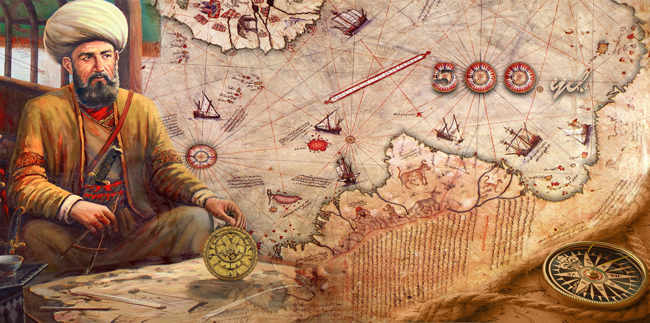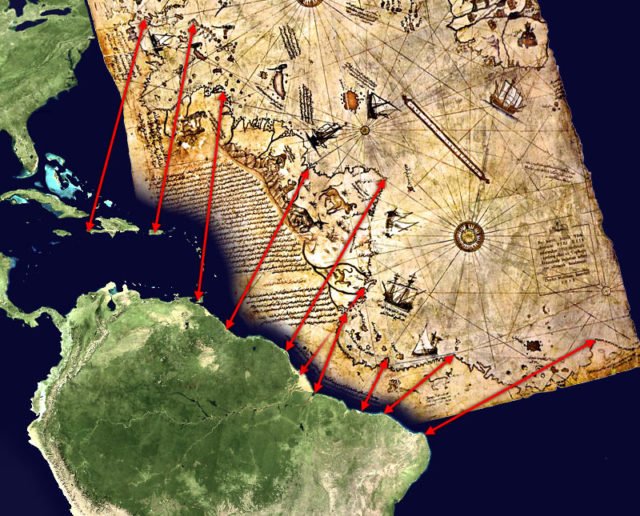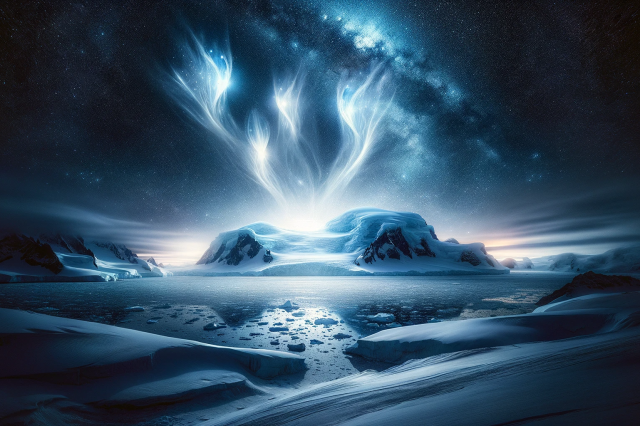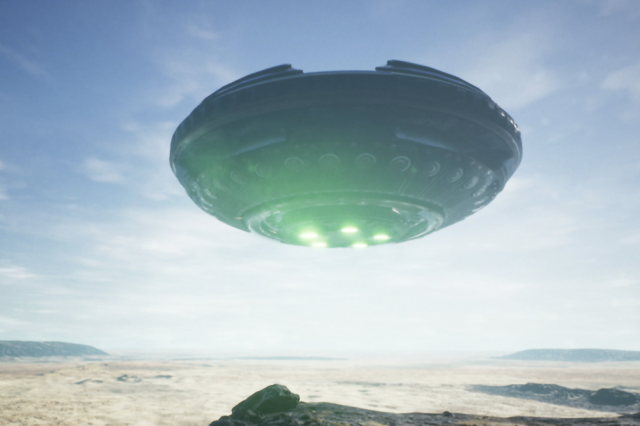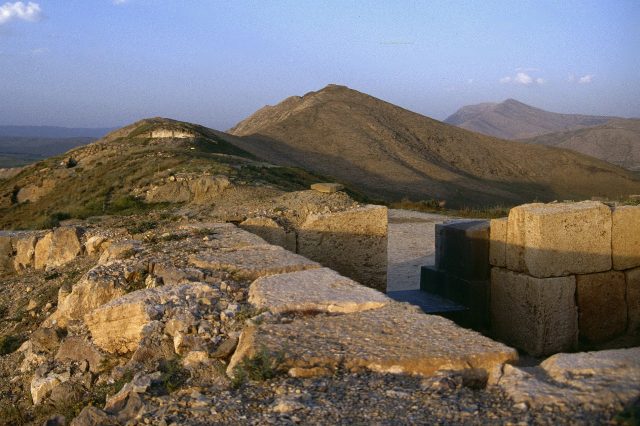This map is said to depict Antarctica void of its kilometer-thick ice sheets. But what is the truth behind this enigmatic, ancient chart?
Does the Piri Reis map really show Antarctica free from ice? There have been countless maps discovered throughout history that have remained an enigma to both scholars and skeptics. Composed around 1513 from military intelligence by the Ottoman admiral and cartographer Piri Reis, today only around one-third of the map remains in existence.
The ancient map shows Europe’s western coasts and North Africa, and Brazil’s coasts with reasonable accuracy. Various Atlantic islands, including the Azores and the Canary Islands, are depicted, as is the mythical island of Antillia and possibly Japan.
A Map Unlike Any Other?
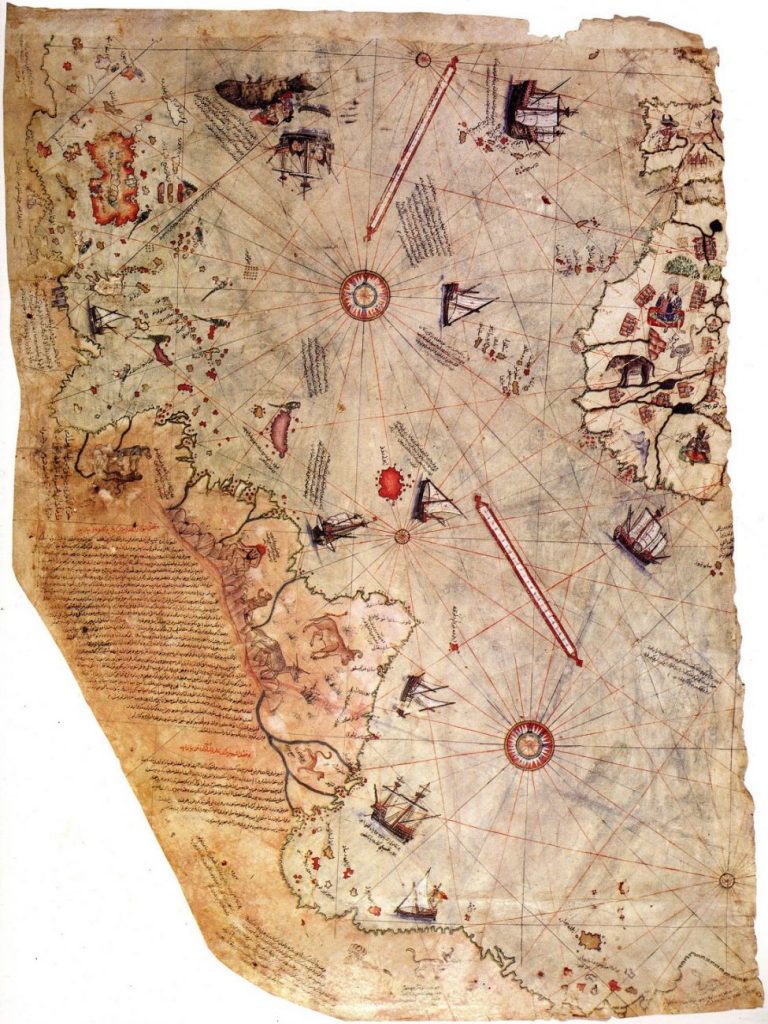
But more recently, it has been revealed that the map, which is based on much older charts of the world, depicts the continent of Antarctica free from ice.
The map, drawn on gazelle skin parchment, was presented to Ottoman Sultan Selim I in 1517.
In the map’s legend, Piri inscribed that the map was based on about twenty charts and mappae Mundi.
According to Piri, these maps included eight Ptolemaic maps, an Arabic map of India, four newly drawn Portuguese maps from Sindh, and a map by Christopher Columbus of the western lands.
From Inscription 6 on the map:
From eight Jaferyas of that kind and one Arabic map of Hind [India], and from four newly drawn Portuguese maps which show the countries of Sind [now in modern day Pakistan], Hind and Çin [China] geometrically drawn, and also from a map drawn by Qulūnbū [Columbus] in the western region, I have extracted it. By reducing all these maps to one scale this final form was arrived at, so that this map of these lands is regarded by seamen as accurate and as reliable as the accuracy and reliability of the Seven Seas on the aforesaid maps.”
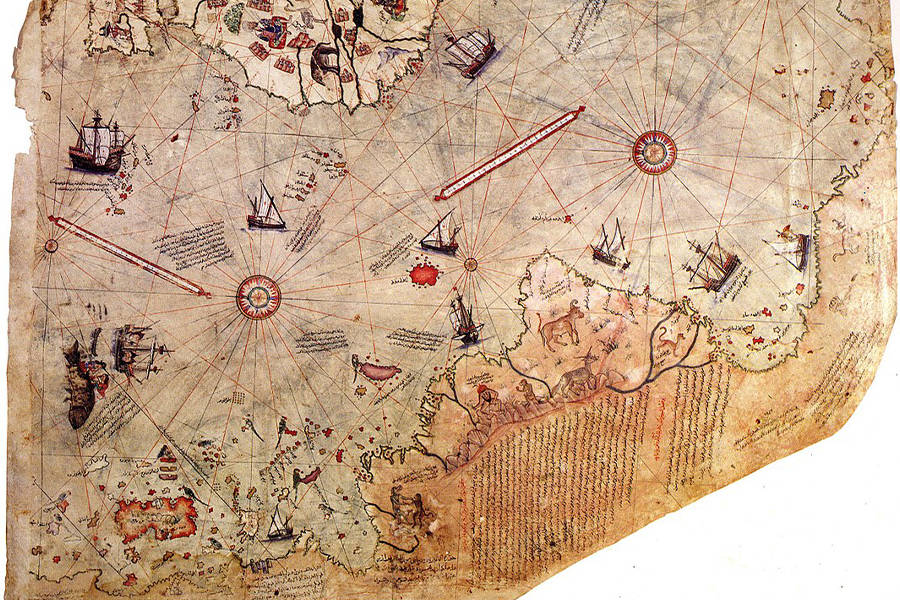
The perfection and details of the map have been the subject of debate among scholars for decades.
Experts have been unable to understand nor explain the supposed extreme precision of the map.
Today, as noted by authors such as Charles Hapgood, Gavin Menzies, and others, various enigmas remain standing about the Piri Reis map, especially in regards to Latin America and the Southern regions of our planet, as the map supposedly outlines the Antarctic continent, but with rivers and mountains that would not have been visible if the continent was covered in ice.
This had led some of them to argue that someone, somehow, must have traveled to Antarctica when it was free of ice.
Antarctica Ice-Free
Ice in Antarctica appeared relatively suddenly— and by suddenly, we mean in geologic terms — about 35 million years ago.
But for the previous 100 million years, the icy continent remained ice-free.
It is thought that ice formed on the Antarctic Continent in only about 100,000 years, which is an “overnight” shift in geological terms. This means that it was 35 million years ago when the continent was last ice-free.
Today, as much as 98% of Antarctica is covered by ice that averages 1.9 km (1.2 mi; 6,200 ft) in thickness and extends to all but the northernmost reaches of the Antarctic Peninsula.
The first exploratory navigation that reached Antarctica was led by British explorer James Cook, who in 1772 only managed to see snow and ice. This was supposedly 250 years after Pirir Reis had already drawn Antarctica on navigational charts showing the continent free of ice.
In 1819, Fabián von Bellingshausen discovered the landmass of Antarctica for the first time.
In 1950 American expedition Deep Freeze managed to “reveal” the geography of the icy continent.
What ‘Experts’ Think
In 1960 Professor Charles Hapgood of Keene College contacted The US Airforce and asked them to review the map and its details.
This was their supposed response:
8 RECONNAISSANCE TECHNICAL SQUADRON (SAC)
UNITED STATES AIR FORCE
Westover Air Force Base
Massachusetts
Reply to Attn of RTC
6 July 1960
Subject: Admiral Piri Reis World Map
To: Prof. Charles H. Hapgood
Keene Teachers College
Keene, New Hampshire
Dear Professor Hapgood,
Your request for evaluating certain unusual features of the Piri Reis World Map of 1513 by this organization has been reviewed.
The claim that the lower part of the map portrays the Princess Martha Coast of Queen Maud Land Antarctic and the Palmer Peninsula is reasonable. We find that this is the most logical and, in all probability, the map’s correct interpretation.
The geographical detail shown in the lower part of the map agrees remarkably with the seismic profile results made across the top of the ice cap by the Swedish-British-Norwegian Antarctic Expedition of 1949.
This indicates the coastline had been mapped before the ice cap covered it.
The ice cap in this region is now about a mile thick. We have no idea how the data on this map can be reconciled with the supposed state of geographical knowledge in 1513.
Harold Z. Ohlmeyer
Lt. Colonel, USAF
Commander
(source)
And another letter by the US Air Force regarding the map:
8 RECONNAISSANCE TECHNICAL SQUADRON (SAC)
UNITED STATES AIR FORCE
Westover Air Force Base, Mass.
14 Aug 61
Mr. Charles H. Hapgood
Keene Teachers College
Keene, N.H.
Dear Professor Hapgood:
It is not very often that we have an opportunity to evaluate maps of ancient origin. The Piri Reis (1513) and Oronteus Fineaus [sic] (1531) maps sent to us by you presented a delightful challenge, for it was not readily conceivable that they could be so accurate without being forged. We accepted this challenge with added enthusiasm and have expended many off-duty hours evaluating your manuscript and the above maps. I am sure you will be pleased to know we have concluded that both of these maps were compiled from accurate source maps, irrespective of dates. The following is a brief summary of our findings:
The solution of the portolano projection used by Admiral Piri Reis, developed by your class in Anthropology, must be very nearly correct, for when known geographical locations are checked about the grid computed by Mr. Richard W. Strachan (MIT), there is remarkably close agreement. Piri Reis’ use of the portolano projection (centered on Syene, Egypt) was an excellent choice, for it is a developable surface that would permit the relative size and shape of the earth (at that latitude) to be retained. We believe that those who compiled the original map had an excellent knowledge of the continents covered by this map.
As stated by Colonel Harold Z. Ohlmeyer in his letter (July 6, 1960) to you, the Princess Martha Coast of Queen Maud Laud, Antarctica, appears to be truly represented on the southern sector of the Piri Reis map. The agreement of the Piri Reis Map with the seismic profile of this area made by the Norwegian-British-Swedish Expedition of 1949, supported by your solution of the grid, places beyond a reasonable doubt the conclusion that the original source maps must have been made before the present Antarctic ice cap covered the Queen Maud Land coasts.
Our opinion that the accuracy of the cartographic features shown in the Oronteus Fineaus [sic] Map (1531) suggests, beyond a doubt, that it also was compiled from accurate source maps of Antarctica, but in this case of the entire continent. Close examination has proved the source maps must have been compiled at a time when the landmass and inland waterways of the continent were relatively free of ice. This conclusion is further supported by comparing the Oronteus Fineaus [sic] Map with the results obtained by International Geophysical Year teams in their measurements of the subglacial topography. The comparison also suggests that the original source maps (compiled in remote antiquity) were prepared when Antarctica was presumably free of ice. The Cordiform Projection used by Oronteus Fineaus [sic] suggests the use of advanced mathematics. Further, the Antarctic continent’s shape suggests the possibility, if not the probability, that the original source maps were compiled on a stereographic or gnomic type of the projection (involving the use of spherical trigonometry).
We are convinced that the findings made by you and your associates are valid. They raise fundamental questions affecting geology and ancient history, questions that certainly require further investigation.
We thank you for extending us the opportunity to have participated in the study of these maps. The following officers and airmen volunteered their time to assist Captain Lorenzo W. Burroughs in this evaluation: Captain Richard E. Covault, CWO Howard D. Minor, MSgt Clifton M. Dover, MSgt David C. Carter, TSgt James H. Hood, SSgt James L. Carroll, and A1C Don R. Vance.
LORENZO W. BURROUGHS
Captain, USAF
Chief, Cartographic Section
8th Reconnaissance Technical Sqdn (SAC)
Westover Air Force Base, Massachusetts
(source)
Professor Hapgood and his students proposed that the Piri Reis map had to have been based on information and charts that were older than 4,000 BCE.
This suggests a time long before any known sophisticated civilizations existed or any well-defined languages were used on Earth. The Piri Reis map suggests the existence of a prehistoric civilization that had the skills and means to navigate the world’s oceans and accurately chart the lands they visited.
Conclusion
But those who disagree with what Professor Hapgood and other authors proposed indicate there is afar more logical explanation.
Those with skeptical views about the Piri Reis map showing Antarctica Ice-free indicate that the map may be a fair representation of South America’s coastline.
Another less-accepted theory attempts to correlate the American outline map of Piri Reis with coastal Venezuela and Brazil.
As seen in the above map, other theories attempt to correlate the lower boundary of the Miri Reis chart with the coast of Argentina’s Patagonia region and the Falkland Islands.
As explained by Steven Dutch, as far as the accuracy of depicting the supposed Antarctic coast is concerned, there are two conspicuous errors.
First, it is shown hundreds of kilometers north of its proper location; second, the Drake Passage is completely missing, with the Antarctic Peninsula presumably conflated with the Western Patagonian coast.
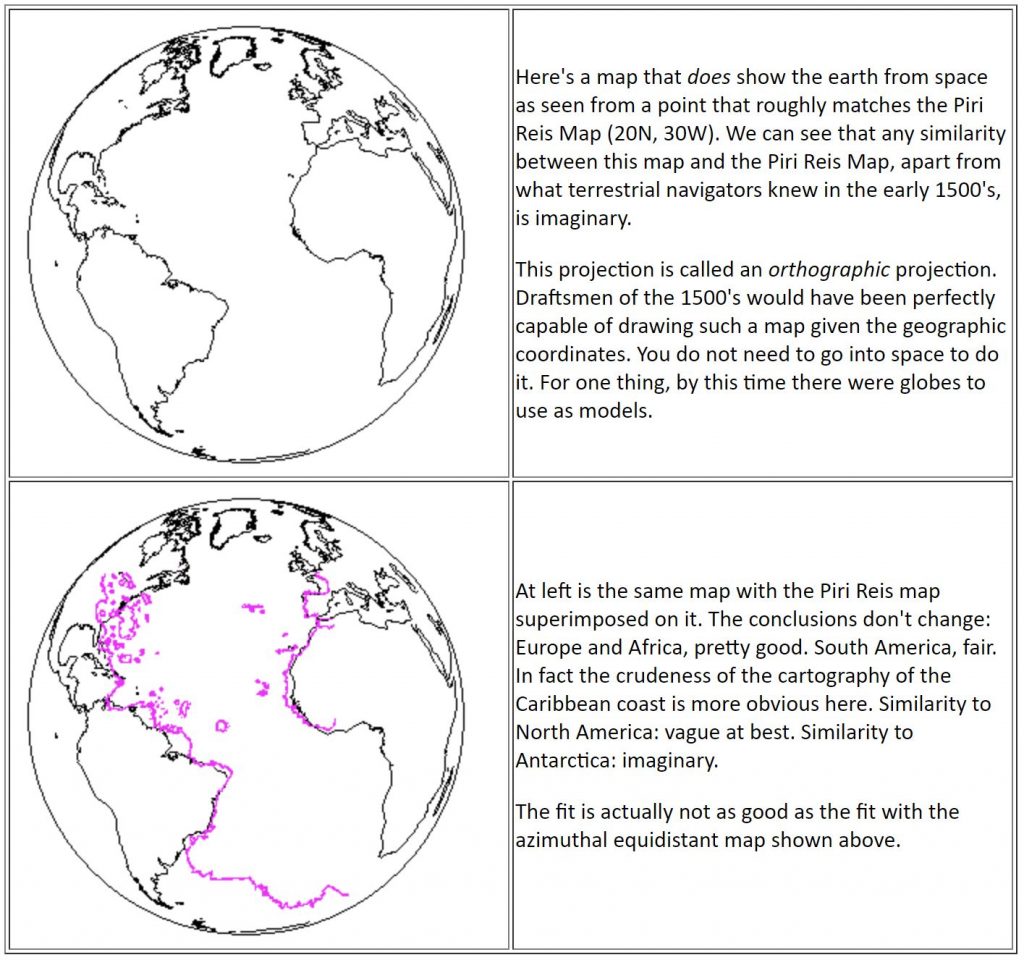
The identification of this area of the map with the frigid Antarctic coast is also difficult to reconcile with the notes on the map, which describe the region as having a warm climate.
Mainstream scholars maintain that there is no reason to believe that the map is the product of genuine knowledge of the Antarctic coast, nor the belief it shows Antarctica free of ice.
Join the discussion and participate in awesome giveaways in our mobile Telegram group. Join Curiosmos on Telegram Today. t.me/Curiosmos

